Fred Kruijen

FotogFocus is an occasional peek at the “photogs” whose work we’ve come to love, with a single page on Palagems.com dedicated to each of them.
Fred Kruijen: Small Wonders
In our June 2011 edition of our bimonthly newsletter Pala Mineralis, we pointed to the “diminutive delights” of photographer Fred Kruijen. He kindly accepted our offer to feature him as the fourth in our occasional series of mineral and gemstone photographers, FotogFocus.
The widths of the specimens pictured here are between 2 and 5 mm. The specimens are from the collection of Willi Schüller, Adenau, Germany, and the collection of Fred Kruijen.
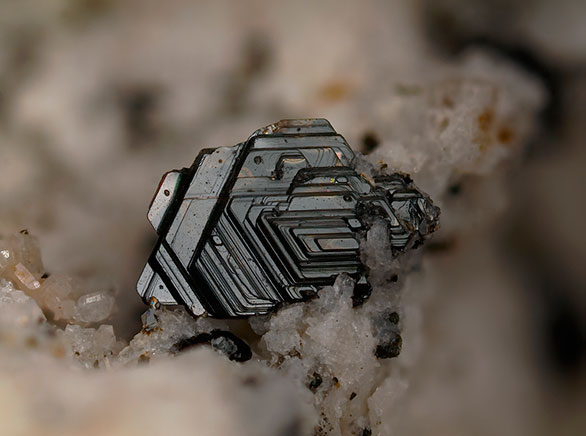 |
| Biotite, from the Steinbrüche in den Dellen (literally, “quarries in the dells”), in the Eifel Mountains of Germany’s Rhineland-Palatinate state. The quarries are just northeast of Mendig, in the northern part of the state. In the course of studying optics, for which he is most famous, French physicist Jean Baptiste Biot studied micas; thus biotite, which bears his name, is sometimes applied to micas in the field. (Photo: Fred Kruijen) |
Fred Kruijen, born in 1956, was never seriously interested in minerals. “Of course, every child is impressed by those beautiful amethyst specimens,” he told us, ”but there it ended for me.” It wasn’t until he began fly-fishing in the 1980s, in pursuit of that sport, that he visited the Eifel Mountains. “I live [in the Netherlands] near the German border, so of course I started fishing in the German Eifel region, fly fishing in the Kyll, Olef, Ahr Rivers….great!” The serenity of these rivers is so attractive to anglers that a Google search of “Kyll,” for instance, returns many reports by fly-fishing enthusiasts.
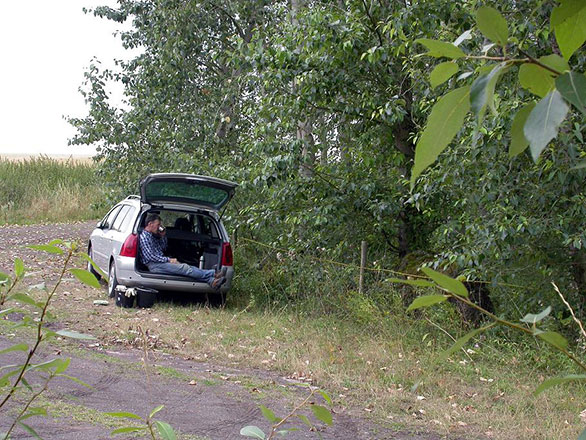 |
| Taking a break. Photographer Fred Kruijen relaxes in the field. (Photo: Fred Kruijen) |
“During these fly fishing sessions in the Kyll (near Gerolstein) I found my first (sea lily) fossils,” said Kruijen, “and later a few poor handpieces with some minerals. My interest in minerals was born. By accident, someone showed me some micromounts through a stereo-microscope—magnificent—a new (tiny) world!”
Eventually, he joined some mineral clubs. He visited the Eifel region again, but on these visits he went for minerals, in the volcanic region known, appropriately as Vulkaneifel, to the quarries at Emmelberg Mountain, Grauley, and Wingertsberg Mountain.
He also went to the Wannenköpfe quarry, near Ochtendung, which we noted in our June 2011 newsletter. “I’ll never forget this first visit in 1999: buckets full with great stuff, topaz, pseudobrookite, rutile, corundum, hematite, and more.” This is still Kruijen’s favorite quarry, he says, “because the xenoliths are often filled with beautiful minerals in many different forms and colors.” It was seeing this panoply of Nature’s diversity that provided the impetus to reflect it on film and in pixels. “Photographing was always a hobby, so why not try those tiny little crystals?”
For more photography by Fred Kruijen, see:
- The Wannenköpfe – Photos from this quarry in Ochtendung, Germany
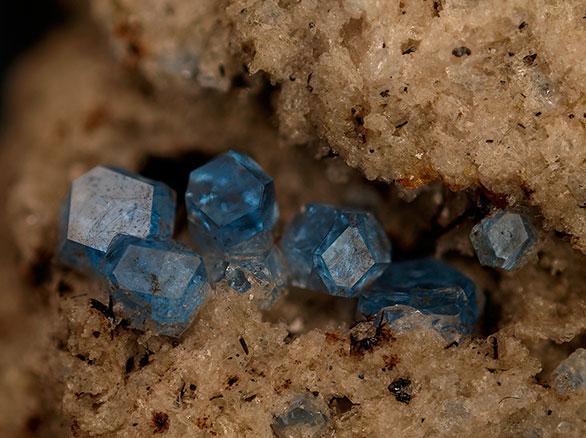 |
| Haüyne, from In den Dellen, for which the locality is known, according to the Strahlen Foundation. (Photo: Fred Kruijen) |
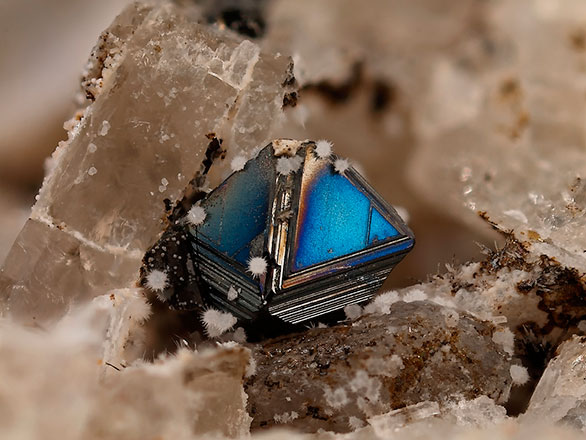 |
| Magnetite, a member of the spinel group, also from In den Dellen. It features several tiny bunches of of aragonite. (Photo: Fred Kruijen) |
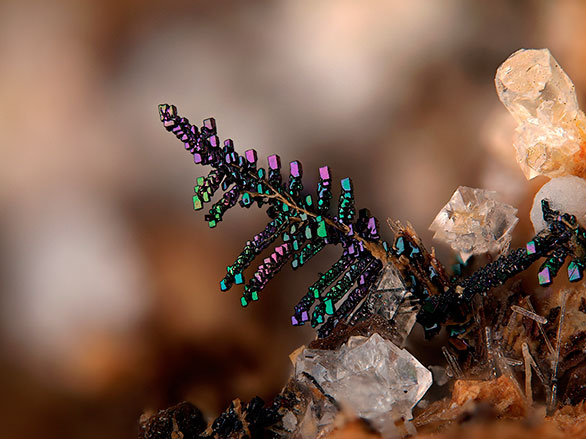 |
| Perowskite. from Rother Kopf Mountain, near the the community of Roth in the town of Gerolstein, also in Rheinland-Palatinate’s span of the Eifel Mountains. (Photo: Fred Kruijen) |
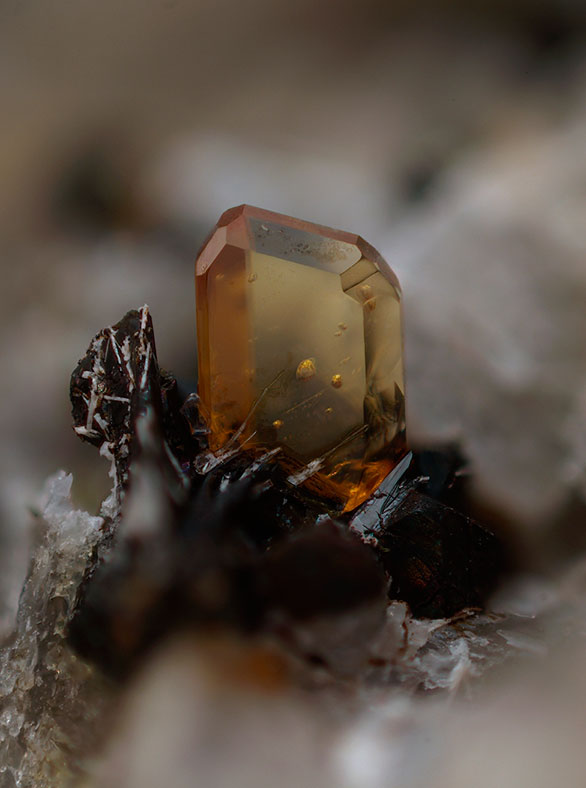 |
| Titanite, again from In den Dellen. The quarries in this locality produce pumice and, thankfully, 150 other minerals, like titanite, sometimes known as sphene. (Photo: Fred Kruijen) |
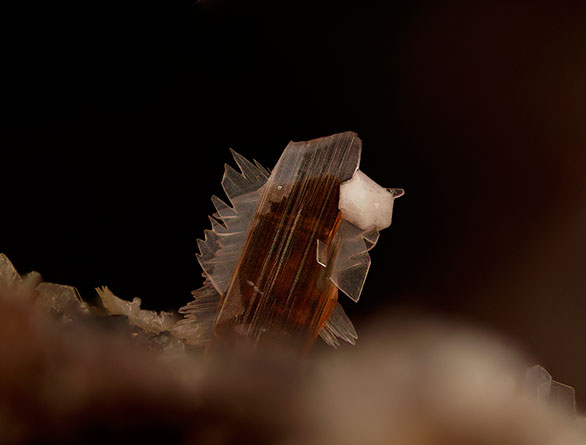 |
| Muscovite, with the typical cockscomb form, from Emmelberg. (Photo: Fred Kruijen) |
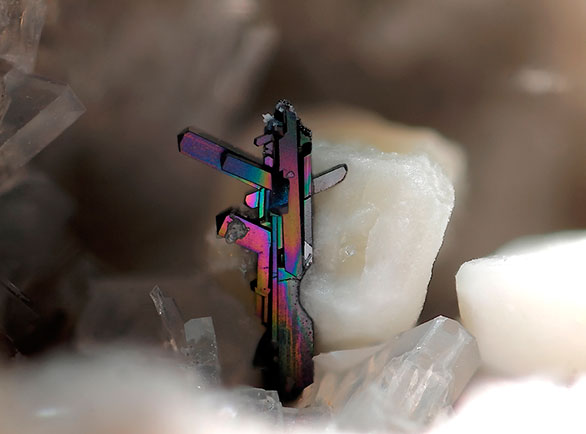 |
| Nice colored rutile aggregate, with some rutile twins, from Wannenköpfe. (Photo: Fred Kruijen) |
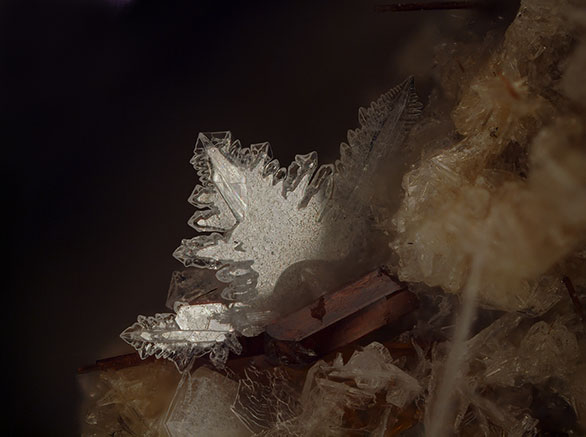 |
| Tridymite aggregate from Bellerberg. (Photo: Fred Kruijen) |
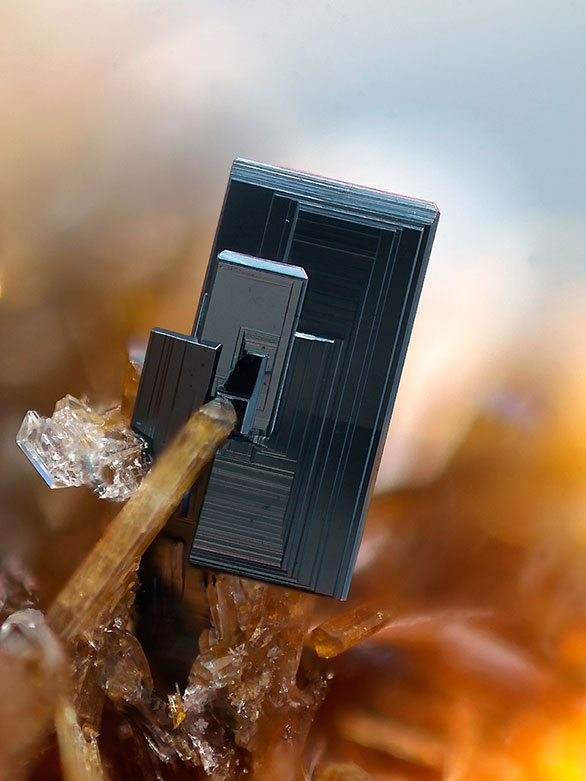 |
| Pseudobrookite from Bellerberg. (Photo: Fred Kruijen) |
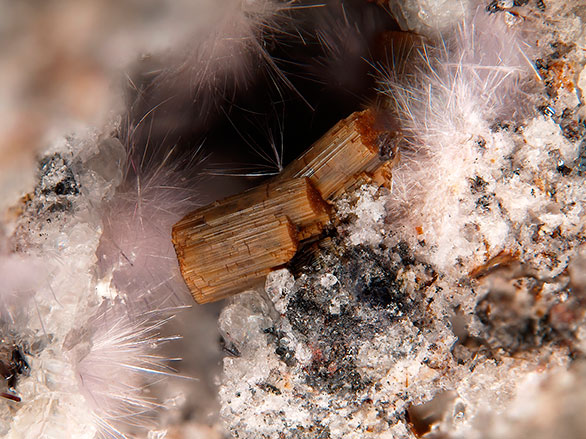 |
| Cordierite with fine mullite needles, from Bellerberg. (Photo: Fred Kruijen) |
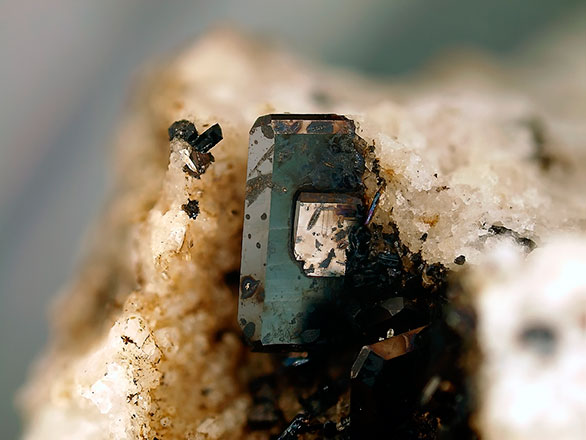 |
| Allanite-(Ce) from In den Dellen. (Photo: Fred Kruijen) |
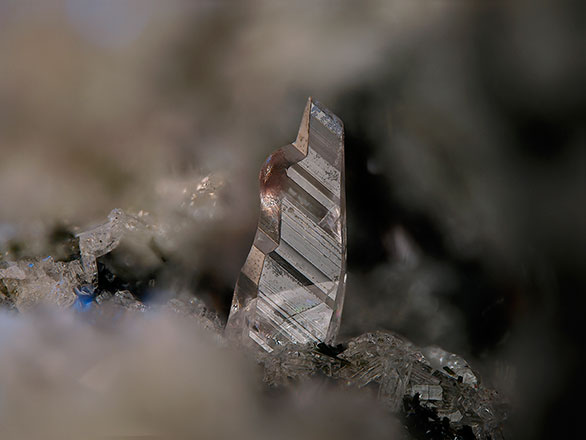 |
| Quartz-beta from Bellerberg. (Photo: Fred Kruijen) |
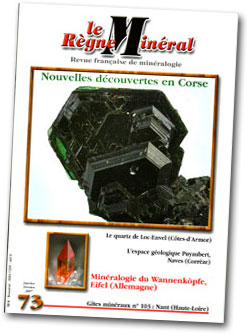 |
| Fred Kruijen’s photographs have appeared in several issues of the Dutch journal GEA as well as Le Règne Minéral, as pictured above. See a list of articles here. |
In camera: “I began photographing through the microscope, and ended with the bellows and DSLR [digital single-lens reflex] using special macro/micro lenses like the Zeiss Luminars and Macro NIKKORs. Of course, camera and lenses are important, but good specimens and investing time are the most important ingredients. Nowadays I use an Olympus E-5, Olympus bellows, in combination with the 19-, 35-, and 65-mm Macro NIKKORs, and a few simple halogen light bulbs. Of course I use multi-layer technique, for which you can find good (free) software on the World Wide Web.” — Fred Kruijen